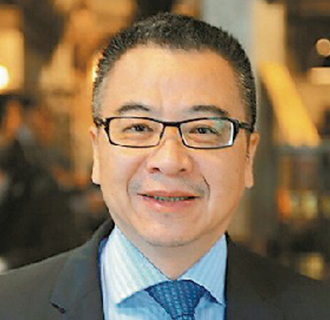COVID-19 全球洗禮,帶給臺灣醫衛之反思
新冠肺炎COVID-19自去年底至今已感染全球近2500萬人,死亡人數達83萬多,受影響國家達187國。
台灣在這波疫情衝擊下,感染人數低於500,死亡人數7人,防疫成果舉世共讚。台灣之成功有幾項重要因素:(一)17年前SARS的試煉,徹底改造台灣防疫體系及架構,包括指揮中心的軟硬體及人員訓練,(二)正常運作長達25年的健保體系並不斷滾動式改進,以及全體醫護人員盡心盡力的投入,(三)公開透明的疫情傳達,獲得民眾的信任,(四)全民配合,個人及社區防疫工作都到位,(五)跨部會全力以赴,中央地方協同一致(志)!
面對未來可能持續1到2年的疫情,寄望於疫苗、藥物及快篩三項重點科技發展成功,在面對不確定性下台灣醫衛必須深自檢討及反思包括國際接軌、經濟發展、防疫生活化等不同面向,共同努力建置新模式,戰勝病毒。
未來的重點在(一)個人防疫常態生活化,(二)利用快篩結合居家隔離、檢疫,縮短隔離時間,減少防疫過度產生的社會負擔,(三)依病情分級分層醫療,減少醫護壓力,保存充分醫療量能,融合防疫及常規醫療,不受影響。
面對未來疫情發展,有不變的防疫基本面,也有隨機而變的防疫措施及模式,期待所有醫護人員、學者專家、全體國民攜手向前,平安度過疫情的衝擊。
The Global Baptism by COVID-19 Brings Reflections on Healthcare System in Taiwan
The COVID-19 pneumonia has infected nearly 25 million people worldwide and caused with more than 830,000 deaths among 187 countries since the end of last year.
Under the impact of pandemics, the confirmed COVID-19 infections is lower than 500 with 7 death cases in Taiwan. The result of pandemics prevention is universally appreciated. There are several important factors for Taiwan's success: (1) The task from SARS 17 years ago, the complete transformed pandemic prevention system and organization including the software, hardware and personnel training of the command center, (2) The national health insurance system has continuously improved for 25 years. All staff are deeply involved, (3) Open pandemic information gaining the trust of the people, (4) Cooperation of personal and community in epidemic prevention, (5) Inter-ministerial cooperation, coordination between central and local governments.
Since the pandemics may last for two years in the future, it is hoped that three key technologies of vaccines, drugs and rapid screening can be successful. To overcome Taiwan health care system must conduct a self-examination and reflection including international integration, economic development and post-COVID life style.
The future focus is on (1) personal lifestyle for epidemic prevention, (2) rapid screening combined with home and centralized quarantine to shorten the quarantine time and reduce the social burden caused by excessive pandemics prevention, (3) hierarchy of health care, reduce the stress of healthcare providers, preserve sufficient medical capacity, integrate pandemics prevention and keep unaffected medical customs.
In the face of the future pandemic development, there will be unchanged basic prevention, as well as modified managements and models. We look forward to all healthcare providers, scholars, experts and all citizens working together to pass through the impact of COVID-19 pandemics.

